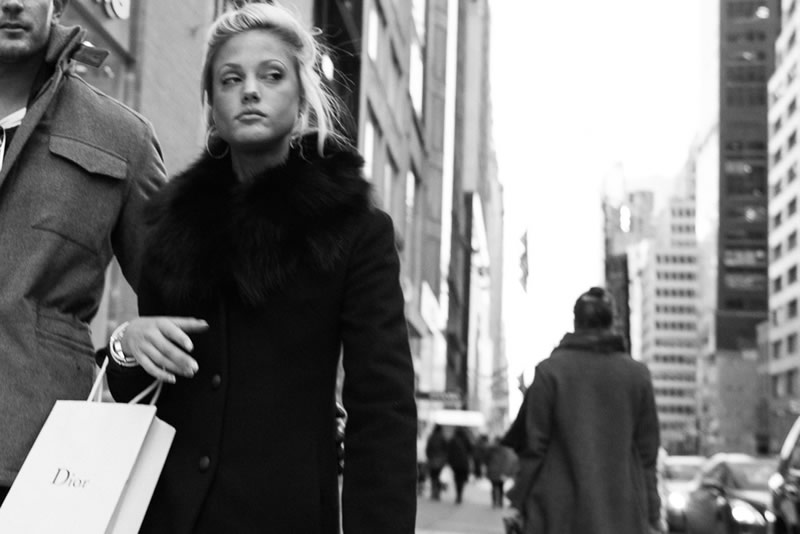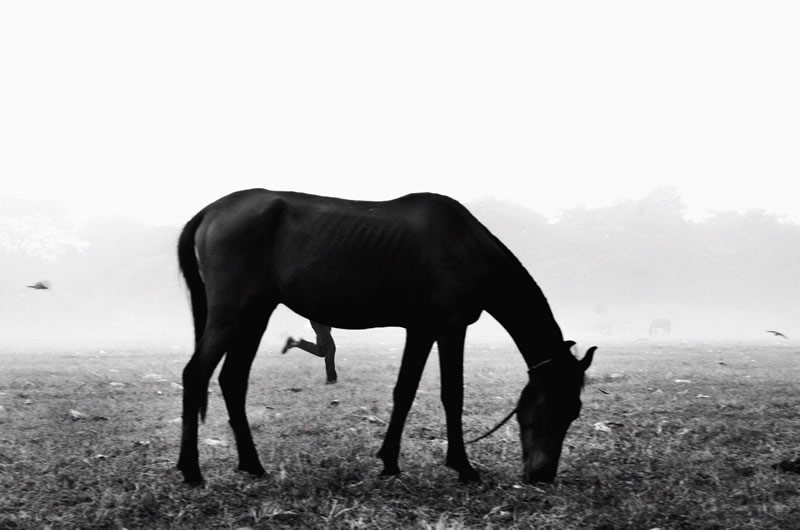Back in 2003 when I purchased my first camera, and even before I decided to become a photographer, I used to wander the streets of New York as a form of relaxation, people watching. 5th Avenue was my favorite street at the time – always crowded and nice and wide so the sun would illuminate it in a wonderful way. I had no idea what I was doing was called street photography, which seems to be a common story for many people.

14 years later and I owe so much to the genre. It furthered a love for the city and the people. It pushed me to start studying the history of the different neighborhoods that I frequented the most. It even grew a love for architecture. It drew me to start a four and a half year portrait and historical interview project in the neighborhood that I live in that continues today. I contribute all of this to the simple fact that I found it so enjoyable at first to wander with a camera and people watch. And given the amount of people that have gravitated to street photography over the last ten years, I know so many others feel the same way.
So here’s what I’ve learned over the years.
The Neighborhoods and the People
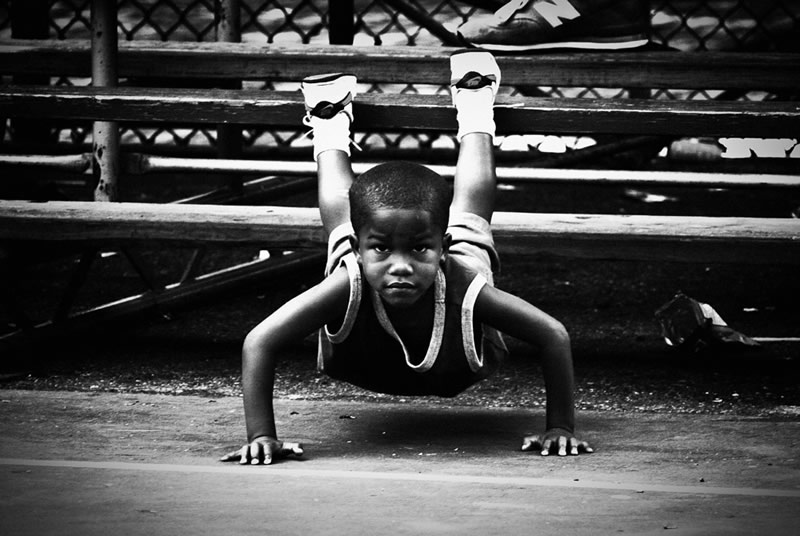
Those of us that practice street photography are looking for a connection to others and to the outside world. The camera allows us a unique way to do that. The true strength of New York comes from its ability to bring all types of people together in such small spaces, and each of these small spaces have unique qualities.
Instead of only searching for those magical moments, search for that connection to others as well. Think about the people, learn about the history of the area, get used to the daily life and flow, and return frequently. If you can learn to enjoy the process of doing this even more than the end result, then you will go a very far way. The end result can be so enjoyable, but it helps if the best part of your day is walking out the front door.
The Busy and the Quiet
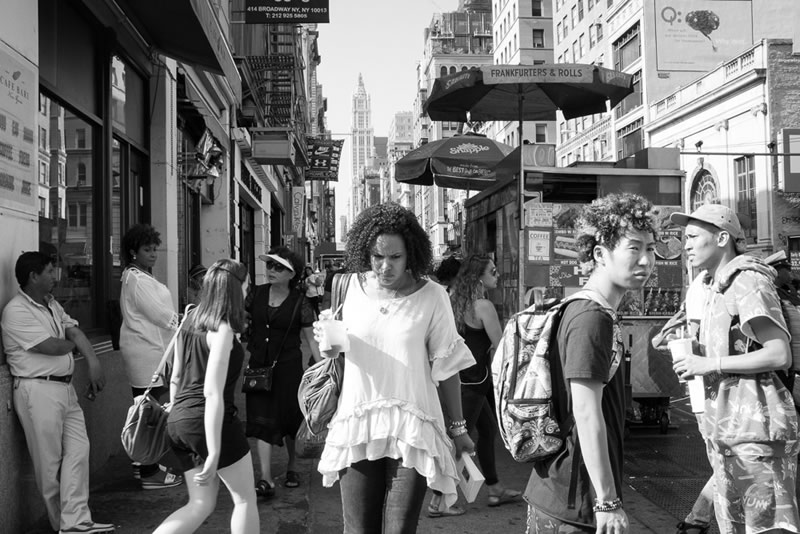
New York can be so busy and so quiet at the same time. On one street will be thousands of people passing by and a few blocks away it will be eerily empty. While these environments are both completely different, they both are incredible for street photography.
Seek out the busiest areas at the busiest times. Surprisingly enough, you will often see the loneliest moments in the busiest place. My favorite tip is to pick a busy street corner and let everything happen around you. Let people enter your personal space instead of you entering their space. This way you can spend your time people watching instead of walking around, it is easier to get into position when you notice something, and you can focus all your energy on looking. It’s surprisingly difficult to actually look and notice what is happening around you without getting distracted.
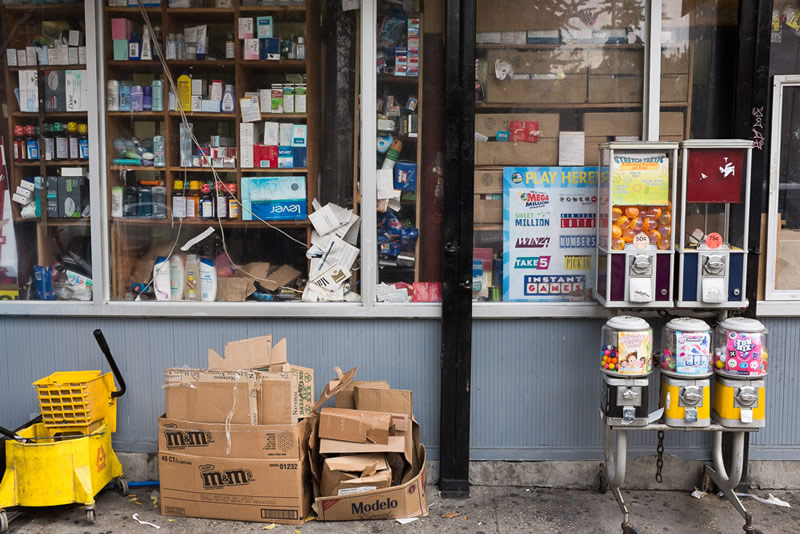
Then go and wander the less populated areas. Seek out unique backgrounds and search for quiet street photographs. While it can take some time getting used to, you will notice that you can create photographs that have just as much interest and appeal as the most interesting shot taken on a busy street corner. And if you see a great background, you don’t always need to put a person in the frame. A photograph of a great environment can quickly be made worse by waiting for any person to walk by. Adding a person to it doesn’t suddenly make it a ‘street’ photograph. It already is, and you need a great moment or the right person to enter the frame to match up with a great environment. If not, just show us that environment.
To Slow Down
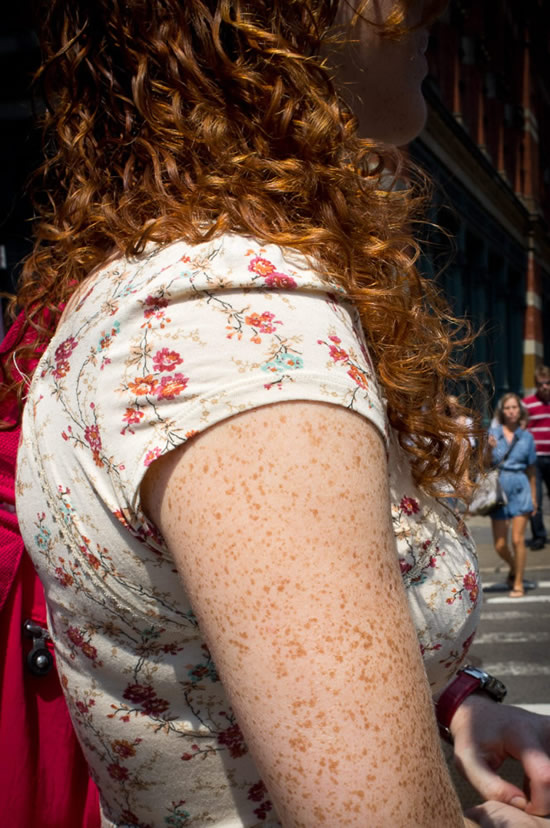
Fast walking and street photography do not go well together. As I mentioned before, focus your energy on looking. If you don’t notice anything (and you so often won’t) just keep looking. Those incredible moments will pop out at you when you least expect it or when you are the most frustrated, and you need to be paying attention to capture them. Slow yourself and wait for things to come together.
There is no reason to keep your eyes glued to the camera. Your eyes are the real viewfinder and they need to notice something before you can even start the process of taking the photo. When done well, most of the work is done before the camera is even brought to the eye.
Forgetting Your Preconceived Notions
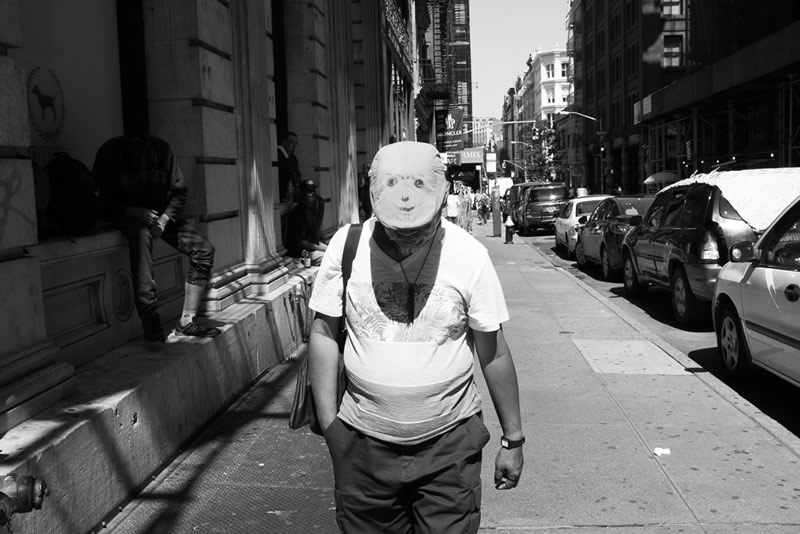
I love looking at the work of other photographers. Like everyone else, I have ideas for types of shots I would like to come across and capture in the future – and that surprisingly works sometimes. But much more often the amazing moments that an area will serve you will be completely unique and unexpected. Forget what New York is supposed to look like.
The Imperfect and Weird
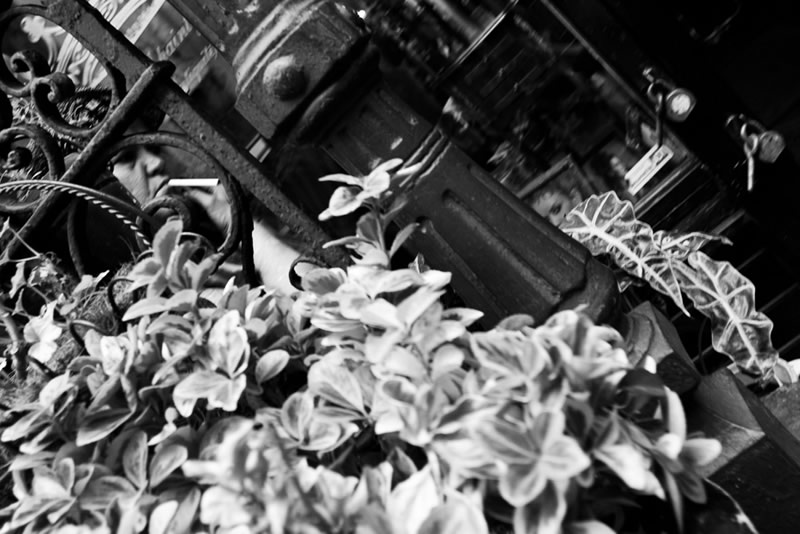
When I started, I wanted everything to be as perfect as possible, but as I’ve gained more experience, I’ve realized that imperfection is part of the beauty of street photography. Grain, a slight skew, elements getting in the way – as long as the moment is right, the picture will be good. The form and light in a photograph are obviously vital, and bad form can ruin your image, but often a street photograph will be even better with some form of imperfection. It will help make the moment feel more real and spontaneous.
Try to take some weird photographs. Weird is a tough term to describe, but what I mean by this is take some photographs that you like that many other people might not like or understand at first. Shoot for yourself and don’t be shy to try and capture images that are completely out of the norm.
Settings and Zone Focusing
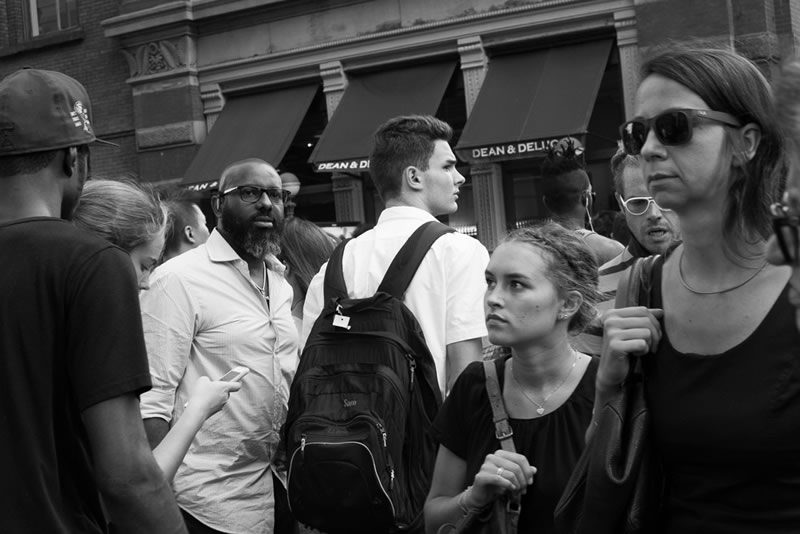
Digital cameras have changed so much since 2003 and because of that so have the settings. High ISOs of newer cameras have become so amazing that I often find no reason to shoot with low ISOs anymore for street photography. The difference in quality is negligible to the eyes. These days, I will shoot with an ISO of 400 in sunlight, 800 to 1600 in shade, and 3200-6400 at night. I keep my ISO higher so I can use both a fast shutter speed of around 250th of a second to freeze motion and as small an aperture as possible. Sometimes you have no choice but to shoot at F2, but wherever possible I like to shoot from F7.1 to F16. The smaller aperture allows me more leeway to screw up the focus and still get the shot, and since background and context are often so important to the photograph, it allows me to capture multiple subjects at different depths all with a general degree of sharpness.
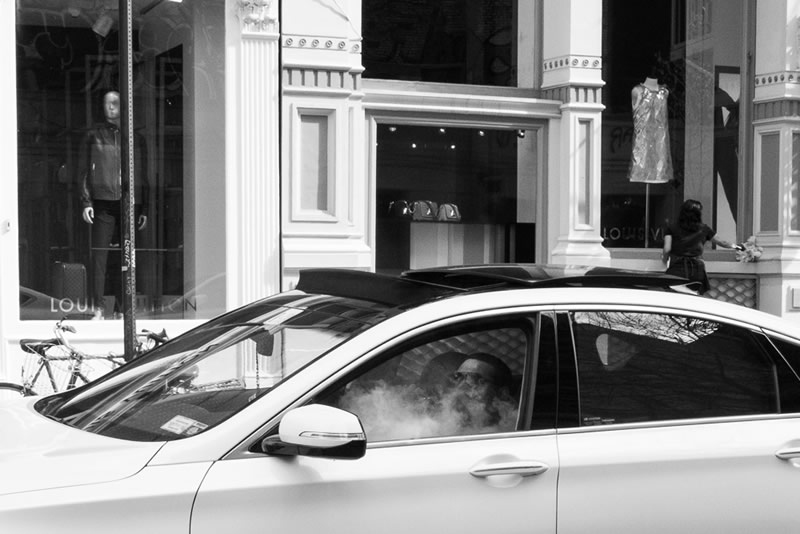
I love zone focusing and do it about 50 percent of the time. I zone focus with a 35mm lens and use autofocus with a 50mm. Zone focusing is the act of setting your camera to manual focus at a specific distance away (around 8 to 10 feet usually and 5 feet in more crowded areas). Then you capture your subjects when they are within that range, but with a wide-angle lens and enough light to use an aperture of F7.1 to F16, you will have a large depth of field in your image. Done right, zone focusing will save you a split second not having to lock on with autofocus, and this split second will give you a whole new level of reaction time when you see an interesting moment. This is particularly important in busy areas, and if you get really good you can even learn to zone focus well at F2 or F2.8.
Measured Spontaneity
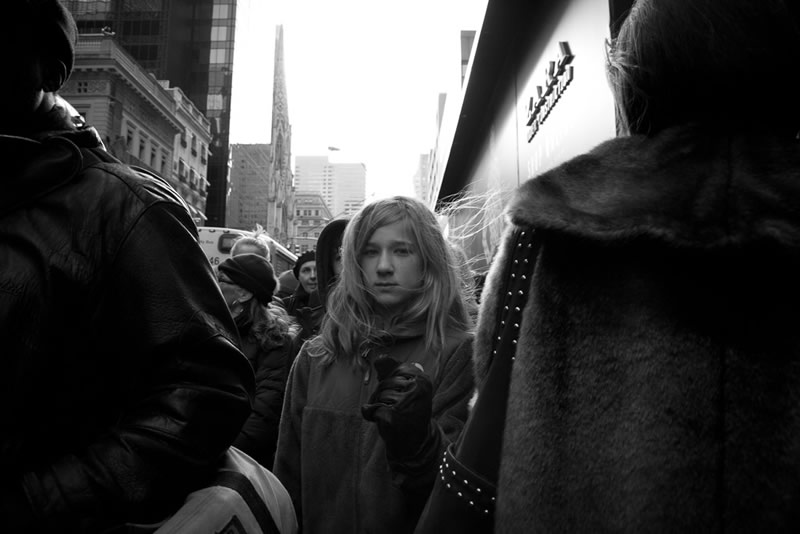
One of the early tips that Winogrand received from a photography teacher was to embrace spontaneity. Now spontaneity does not mean to set your camera on rapid fire. You should still see a moment happening before you capture it. Focus on seeing things, but at the same time go with your gut. Wait till you feel the potential for something to happen and then go for it. If you feel it, take some photographs. Try to think less when you are shooting and react more. Often these photographs will turn out to be nothing, but when you get a good one it will be that much more spectacular.
Night
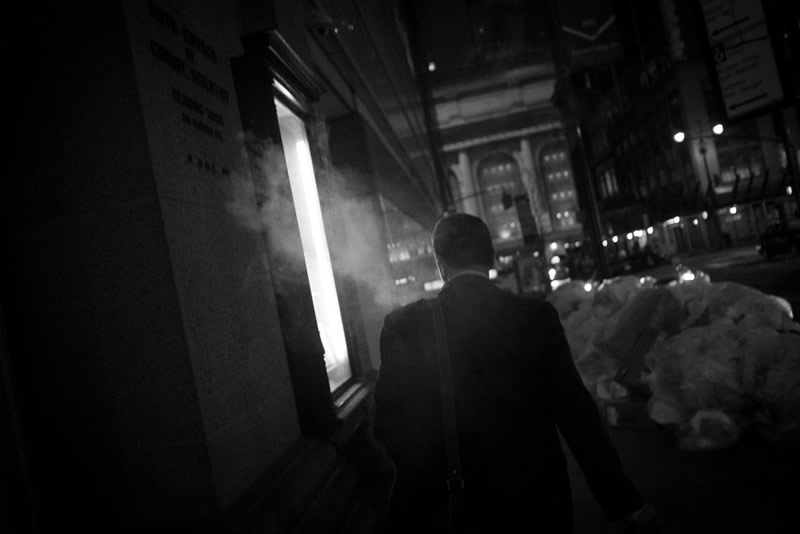
Everything looks more beautiful at night.
About James Maher
James has lived in New York for his entire life (besides a 5 year stint in Madison, Wisconsin, but he doesn’t want to talk about that.) Like many Manhattanites, he is a terrible driver and cook, but he’s an excellent navigator and knows where to find the best Chinese takeout. He has been practicing the art of street photography since he first picked up a camera, has worked as a portrait and fine art photographer in New York since 2005, has had a regular feature for the NY Daily News reporting on different neighborhoods of the City through street portraits and interviews with locals, and is a certified New York tour and workshop guide. He is also the author of The New York Photographer’s Travel Guide and The Essentials of Street Photography.
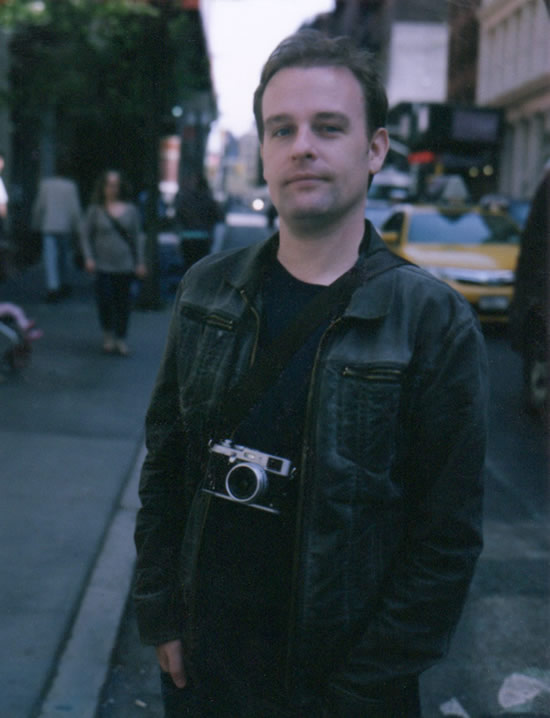
You can find James Maher on the Web :
Copyrights:
All the pictures in this post are copyrighted James Maher. Their reproduction, even in part, is forbidden without the explicit approval of the rightful owners.

